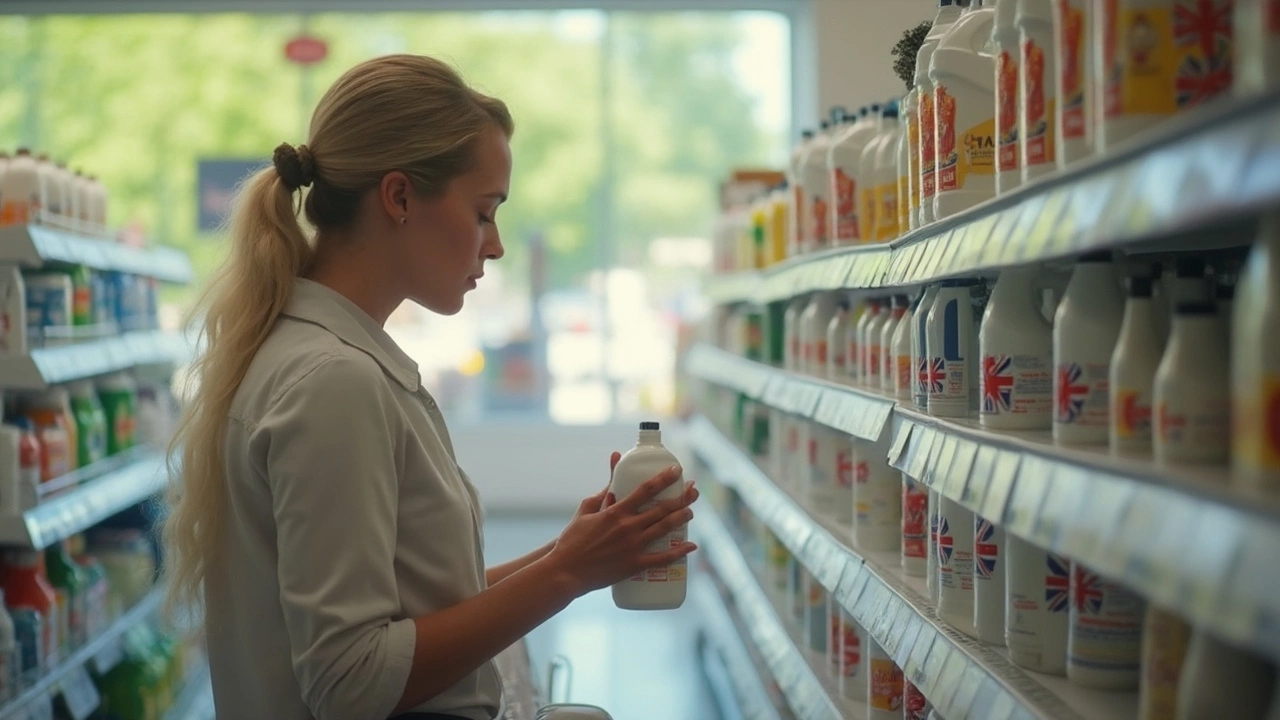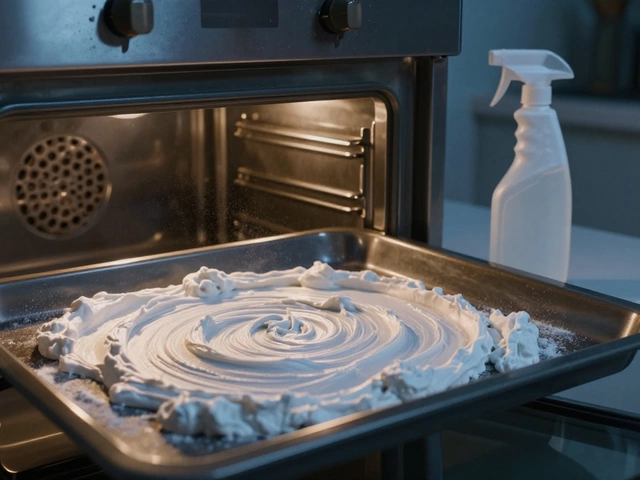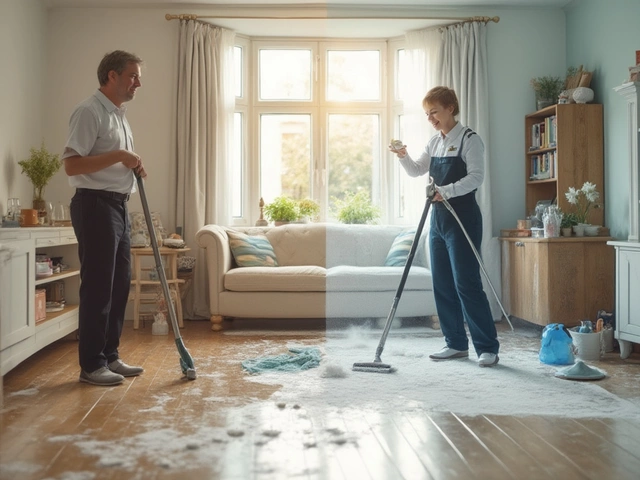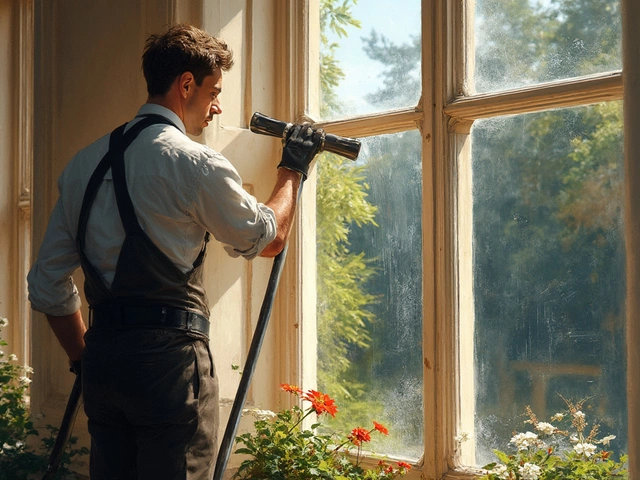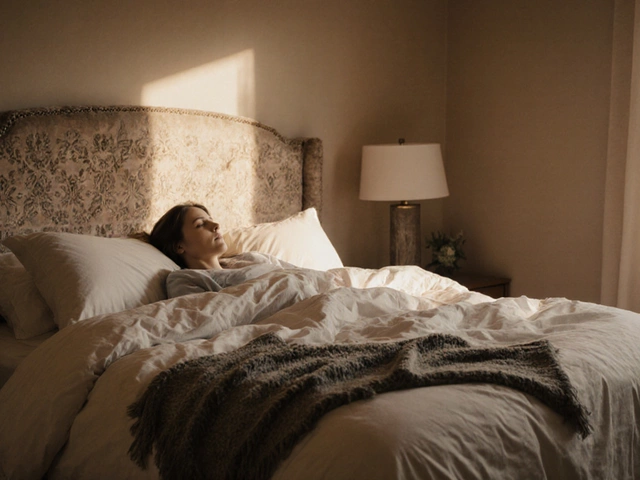Grab a bottle of bleach and it's hard not to feel like you’ve got a powerful cleaning tool. It zaps away stains, kills germs, and leaves everything smelling hospital-level clean. But before you splash it on every surface, it’s worth asking if this stuff is actually good for the planet—or if we just got used to the smell over the years.
For starters, bleach isn’t just some harmless magic liquid. Most bottles you’ll find are made with sodium hypochlorite, a chemical that does a great job cleaning but isn’t very gentle outside your home. Once bleach heads down the drain, it reacts with all sorts of stuff in water, sometimes forming byproducts that can mess with rivers, fish, and even the air we all breathe. Concerns about “eco-friendly bleach” aren't just hype—they’re rooted in what actually happens when it leaves your sink or toilet bowl.
If you’re trying to cut back on your footprint, understanding how bleach works—and what else you could use—is the first step. Smart cleaning isn’t just about getting things super white; it’s about keeping the stuff you love (and the planet too) around for the long haul.
- Bleach Breakdown: What’s Inside?
- How Bleach Impacts Water and Wildlife
- Can Bleach Be Made Safer or Greener?
- Alternatives: Do Any Work as Well?
- Everyday Cleaning Hacks for Eco-Conscious Folks
Bleach Breakdown: What’s Inside?
Crack open a bottle of regular household bleach and you’ll find the main player is sodium hypochlorite, usually hovering around 5-6% strength in most brands. It’s not pure magic—this is a salty, basic chemical that’s serious about killing germs, removing stains, and giving laundry the power-wash effect.
Here’s a quick look at what you’re really pouring out of the bottle:
- Sodium hypochlorite: This is the main disinfecting ingredient. It breaks down proteins in viruses and bacteria, basically nuking them on the spot.
- Water: Most of what’s in the bottle is just plain old H2O.
- Salt (sodium chloride): Left over from making the bleach, it helps stabilize the solution.
- Small amounts of lye (sodium hydroxide): Stops the bleach from breaking down before you use it.
There aren’t many other extras in typical household bleach. No scents, no dyes, just a formula that’s designed to do work fast. Some “splashless” or “scented” types might add thickeners or perfumes, but plain bleach keeps it basic and strong.
Here’s what the Environmental Protection Agency (EPA) says about bleach:
“Sodium hypochlorite solutions are effective disinfectants but should be used and stored carefully because improper use can lead to health risks and environmental damage.” — U.S. EPA
Why does this matter? When bleach does its thing, it gets unstable. If you leave it out in sunlight or mix it wrong (definitely never with ammonia), it starts to change fast. It can release chlorine gas (not good for humans or pets), and that’s why the warnings are plastered on every label.
Let’s look at a simple comparison of what’s inside standard bleach products:
| Component | % by Volume |
|---|---|
| Sodium Hypochlorite | 5-6% |
| Water | 92-94% |
| Other (Salt, Lye) | 1-2% |
So next time you pick up a bottle, remember there isn’t much mystery behind it—just a small dose of a strong chemical, a lot of water, and a dash of sodium compounds to keep things stable until you’re ready to clean. But even though the formula is simple, how you use bleach makes a big impact on your home and the wider world.
How Bleach Impacts Water and Wildlife
When bleach washes down your drain, that’s not the end of its story. A lot of people assume water treatment plants just zap it away, but the truth is, bleach mixes with stuff in water—like dirt, organic material, and other chemicals—turning into all sorts of new compounds. Some of these, like chlorinated organics (think chloroform), aren’t so friendly to nature or people.
Even a splash of bleach in the wrong place can do some real damage. If it sneaks into rivers or lakes, it can wipe out fish eggs and hurt amphibians, which are sensitive to changes in their environment. Some byproducts from bleach stick around in water much longer than you’d expect. Scientists have found these can hurt water bugs (the tiny creatures that keep streams healthy) and even make their way up the food chain. It’s not just about the water, either—when bleach hits sunlight or heat, it can send chlorine gas into the air, irritating lungs and impacting air quality, especially near sewage plants.
Here’s a quick look at what happens when bleach enters water:
- It reacts, making new chemicals—some of which are toxic
- It can kill beneficial bacteria that are key for keeping water clean naturally
- In higher amounts, it hurts fish, frogs, and things living at the bottom of rivers
- Chlorinated byproducts can build up and stay in the ecosystem for a long time
Check out some numbers that show how much bleach can affect water:
| Impact | Fact/Stat |
|---|---|
| Fish Sensitivity | Just 0.5 mg/L of chlorine in water can kill some small fish within hours |
| Byproducts | Sodium hypochlorite forms over 600 possible chlorinated organic compounds in water |
| Safe Limit | EPA recommends no more than 4 mg/L of chlorine in drinking water |
So if you want both a clean toilet and a clean planet, it pays to remember that bleach isn’t as simple as it looks. Even using a little less makes a difference, especially when you think about all the houses on your street sending cleaner water out into the world.

Can Bleach Be Made Safer or Greener?
The short answer: standard bleach hasn’t changed much, but there are a few twists out there that try to be less harsh. Classic bleach—most bottles you’ll spot—contains sodium hypochlorite mixed with water. It breaks down into salt and water eventually, but before then, it reacts with stuff in plumbing and nature, sometimes creating chemicals you don’t want sticking around. One common byproduct, called AOX (adsorbable organic halides), is pretty stubborn and can harm fish and tiny water critters.
So, are brands doing anything to make bleach less tough on the planet? A few companies have started making "oxygen bleach," which usually means products with hydrogen peroxide instead of sodium hypochlorite. These don’t leave behind the same byproducts, and hydrogen peroxide breaks down into just water and oxygen. It’s not perfect, but it’s way gentler for rivers and lakes.
Here's what you can look for if you want to clean smarter and greener:
- Pick products labeled “chlorine-free” or those based on hydrogen peroxide.
- Use only as much bleach as you really need—overusing just creates more pollution.
- Skip anything with extra scents or dyes, which are just more chemicals your drain doesn’t need.
- If you stick with regular bleach, never mix it with ammonia or vinegar—this makes nasty fumes and doesn’t help the planet.
One more tip: always rinse surfaces with plenty of water if you use bleach, so any leftover stuff gets diluted.
Plenty of people still lean on bleach for tough jobs, but if you’re thinking about the environment, these tweaks can help soften your impact without walking away from deep cleaning altogether.
Alternatives: Do Any Work as Well?
Everyone wants their cleaning products to be tough on grime and easy on the planet. So, what’s out there if you decide to ditch bleach? There’s a lot of hype about natural options, but do any of these really stack up?
Baking soda and vinegar are the tag team you’ll hear about most. Vinegar does a fair job against some germs and helps cut through mineral buildup, especially on glass and kitchen surfaces. Baking soda is great for scrubbing and neutralizing odors but, just so you know, mixing baking soda and vinegar cancels out their power. They’re better used one after the other—not together in the same bowl.
Hydrogen peroxide is a solid pick for disinfecting—just look for 3% solutions from the drugstore. It’s been shown to kill a range of bacteria and viruses, and it breaks down safely into water and oxygen. However, it’s not as powerful on heavy stains or mold as traditional bleach.
If you’re into plant-based products, some green cleaners get their kick from citric acid, essential oils (like tea tree or eucalyptus), or enzymes. These often work well for everyday jobs but don’t expect miracles on old mildew or raw chicken mess. Check for third-party eco labels to avoid greenwashing; brands like Seventh Generation and Ecover have EPA Safer Choice or similar certifications backed by real testing.
| Alternative | Main Use | Eco Score* | Disinfection Power* |
|---|---|---|---|
| Vinegar | Mineral buildup | 9/10 | 3/10 |
| Baking Soda | Scrubbing & Odors | 9/10 | 1/10 |
| Hydrogen Peroxide | Disinfecting | 8/10 | 7/10 |
| Plant-Based Cleaners | General surface cleaning | 8/10 | 5/10 |
*Scores based on published consumer reports, EPA Safer Choice research, and product ingredient ratings as of 2024
- Use vinegar for windows and limescale, not for killing viruses.
- Try hydrogen peroxide in a spray bottle for counters or toothbrush holders.
- For toilets or shower mold, you may need elbow grease or repeated cleaning with eco-friendly products.
The bottom line: most alternatives manage average messes just fine, but nothing—besides old-fashioned bleach—knocks out every germ or stain in one shot. Still, for everyday cleaning, you’ll probably be surprised how well these gentler options hold up, especially if you stay on top of chores instead of letting grime build up.
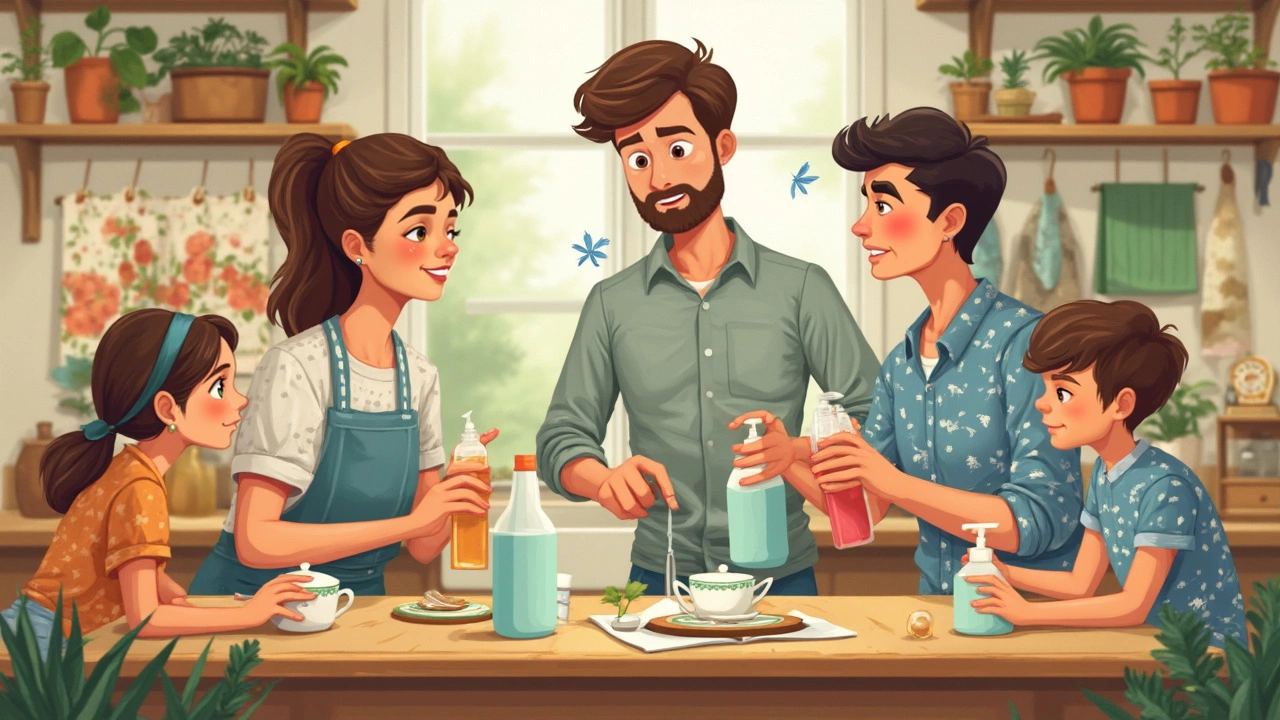
Everyday Cleaning Hacks for Eco-Conscious Folks
If you want a cleaner house without trashing the planet, you’ve got options. You don’t need fancy equipment or complicated routines—just some basic swaps and good habits can make a big difference. The best part? Most of these tricks are easy on your wallet and safer for kids and pets too.
First up, baking soda and vinegar. Sounds like a high school volcano, but together they bust through grime, soap scum, and even food stains. Need an all-purpose cleaner? Mix 1 cup vinegar with 1 cup water in a spray bottle. For tough spots, sprinkle baking soda, then spritz vinegar on top and scrub. It fizzes away the dirt, and you skip the harsh stuff.
Essential oils don’t just make things smell nice—they’re natural germ fighters. Add a couple drops of tea tree or lavender oil to your DIY cleaners for an extra punch. Lemon juice and hydrogen peroxide work for brightening surfaces. Need to disinfect? Soak a rag with hydrogen peroxide (3% solution), wipe surfaces, and let air dry. Not as intense as bleach, but a solid everyday backup.
Here’s a quick side-by-side to help you see how natural options stack up against regular store cleaners:
| Cleaning Job | Conventional Product | Eco-Friendly Alternative |
|---|---|---|
| All-Purpose | Spray with bleach | White vinegar + water |
| Scrubbing sinks | Abrasive powder | Baking soda |
| Disinfecting | Bleach solution | Hydrogen peroxide (3%) |
| Deodorizing | Scented sprays | Lemon juice or essential oils |
Don’t forget about microfiber cloths. These grab dust and dirt with just water—no cleaner needed. Wash them after use, and you’ll save cash on paper towels too. If you’re dealing with nasty odors (think: smelly trash cans), just toss some baking soda at the bottom and let it soak things up.
Last tip: Always read labels and skip anything with the word “antibacterial” on your daily cleaners. The EPA points out that everyday cleaning doesn’t need those ingredients, and they can actually make germs harder to kill in the long run.
Ready to swap out your old habits? Start with one small change and see how much less you reach for that bleach bottle. Your home (and the planet) will thank you.
